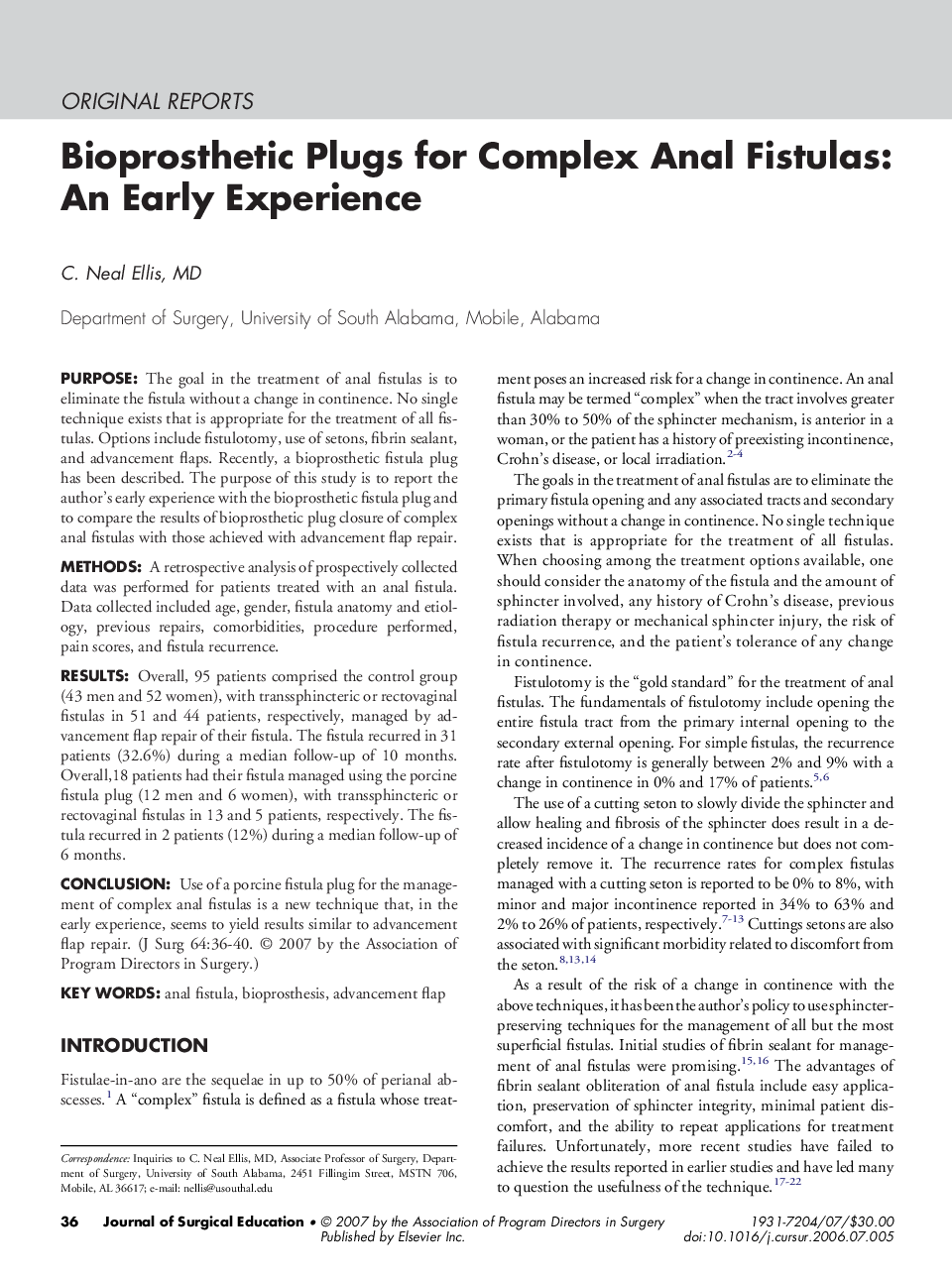| Article ID | Journal | Published Year | Pages | File Type |
|---|---|---|---|---|
| 4298993 | Journal of Surgical Education | 2007 | 5 Pages |
PurposeThe goal in the treatment of anal fistulas is to eliminate the fistula without a change in continence. No single technique exists that is appropriate for the treatment of all fistulas. Options include fistulotomy, use of setons, fibrin sealant, and advancement flaps. Recently, a bioprosthetic fistula plug has been described. The purpose of this study is to report the author’s early experience with the bioprosthetic fistula plug and to compare the results of bioprosthetic plug closure of complex anal fistulas with those achieved with advancement flap repair.MethodsA retrospective analysis of prospectively collected data was performed for patients treated with an anal fistula. Data collected included age, gender, fistula anatomy and etiology, previous repairs, comorbidities, procedure performed, pain scores, and fistula recurrence.ResultsOverall, 95 patients comprised the control group (43 men and 52 women), with transsphincteric or rectovaginal fistulas in 51 and 44 patients, respectively, managed by advancement flap repair of their fistula. The fistula recurred in 31 patients (32.6%) during a median follow-up of 10 months. Overall,18 patients had their fistula managed using the porcine fistula plug (12 men and 6 women), with transsphincteric or rectovaginal fistulas in 13 and 5 patients, respectively. The fistula recurred in 2 patients (12%) during a median follow-up of 6 months.ConclusionUse of a porcine fistula plug for the management of complex anal fistulas is a new technique that, in the early experience, seems to yield results similar to advancement flap repair.
